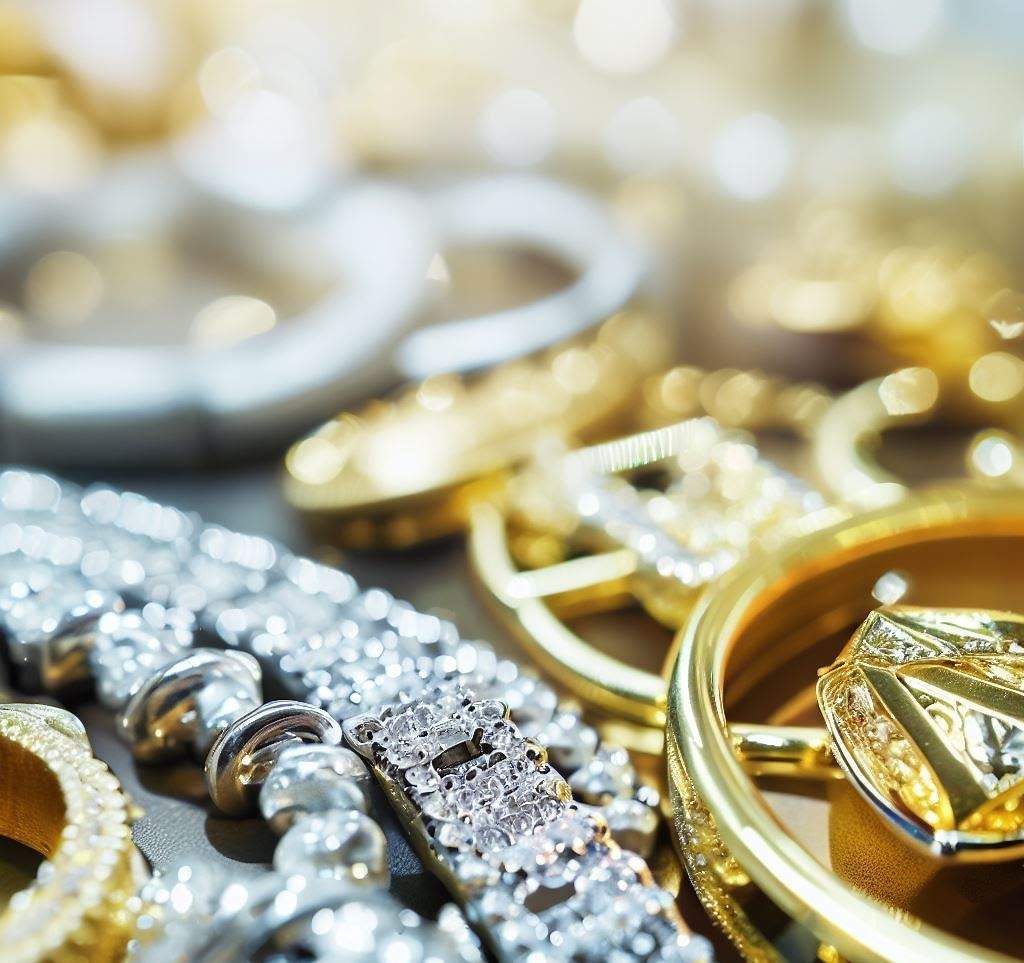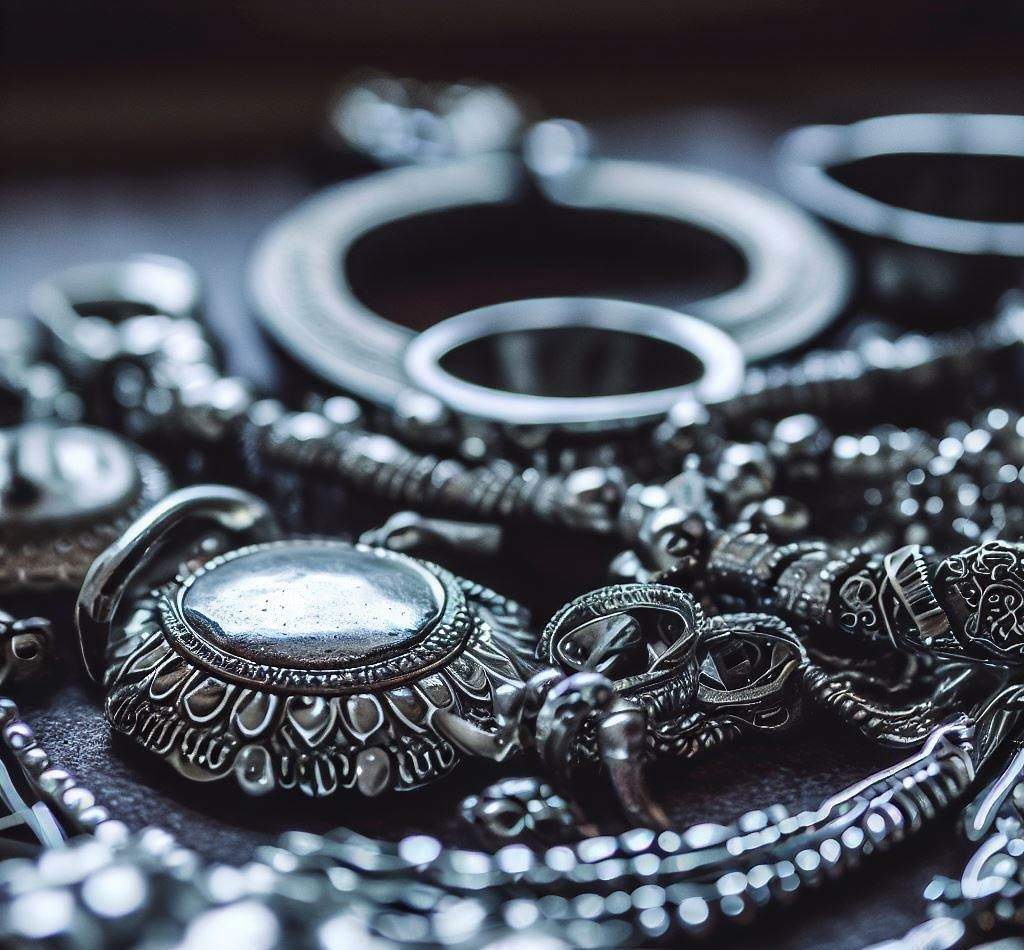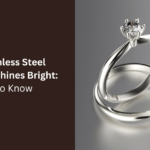What Metals Are Good for Jewelry Making?
People make jewelry with metal as the base material. Besides the classic precious metals like gold and silver, they use many popular metals and alloys in modern jewelry design. The blog will explain the different kinds of jewelry metals and alloys. Read this before you buy any metal jewelry for your business or personal needs.
3-Precious Metals for Jewelry
Precious metals are scarce and expensive metals that usually have high stability, resistance to corrosion, and flexibility. The primary jewelry metals in this category are gold, silver, and platinum.
Gold
Jewelry products use almost half of the gold in the world. Pure gold is flexible, soft, and shiny. But it is easy to scratch and deform when used in jewelry.
To make it sturdy, more resilient, and cheaper, people often use gold alloy in the market, which is called k gold. 24k gold is pure gold. There are other kinds of k gold for jewelry: 18k gold, 14k gold, 10k gold
Generally, low-karat gold jewelry is stronger and more durable than high-karat.
18k gold
18K gold is a gold alloy that contains 75% pure gold and 25% other metals. The other metals can vary depending on the color and properties of the gold. For example, copper can add a pink hue to 18K rose gold, while zinc can increase the hardness of 18K white gold.
18K gold is one of the most popular types of gold for jewelry because it balances purity and durability. It has a rich yellow color and a high luster, but it is also more resistant to scratches and deformation than pure gold. However, 18K gold is more expensive and heavier than lower-karat gold.

14K gold
14k gold is a type of gold alloy that contains 58.3% pure gold and 41.7% other metals. The other metals can vary depending on the color and properties of the gold, like silver, copper, and zinc. We can use them to make 14K yellow gold, while nickel, palladium, or manganese to make 14K white gold.
14k gold is a popular choice for jewelry. It offers a good balance between affordability and quality. It has a rich yellow color and a high luster, but it is also more resistant to scratches and wears than higher-karat gold. However, 14K gold is heavier and less hypoallergenic than lower-karat gold.
10K gold
10k gold is a type of gold alloy that contains 41.7% pure gold and 58.3% other metals. The other metals can vary depending on the color and properties of the gold. We can use silver, nickel, palladium, zinc, or copper to make 10K yellow, white, or rose gold.
10k gold is the most affordable and most durable type of gold used for jewelry. It has a pale yellow color and a low luster, but it is also more resistant to scratches and wears than higher-karat gold. However, 10K gold is heavier and less hypoallergenic than lower-karat gold.
Platinum
Platinum is a rare and costly metal with very high corrosion resistance. It is usually mixed with other metals to make jewelry, such as pt950, pt900, and pt800, which have different levels of purity and price, with the highest being pt950 and the lowest being pt800.
The platinum alloy contains platinum and either palladium or iridium. Platinum alloy is hard and silver-colored. It does not tarnish or discolor easily because it is very stable. It also has a great shine and can be shaped easily, making it ideal for jewelry with diamonds or pearls. Other metals in platinum alloy help to make the jewelry stronger. The metals that makeup platinum alloy are:
- Rhodium (Rh)
- Ruthenium (Ru)
- Palladium (Pd)
- Iridium (Ir)
- Platinum (Pt)
Silver
Silver is cheaper than gold and platinum. It is the third noble metal after gold and platinum.
Silver is a standard metal for jewelry. However, pure silver is too soft to make jewelry, softer than gold or platinum.
Therefore, they usually mix 7.5% copper with sterling silver to enhance the shine, brightness, and hardness. This 92.5% pure silver is called 925 silver.
925 silver jewelry is a lovely option for fashion jewelry because it has a high-end look. People widely use it for earrings, bracelets, necklaces, and rings.
Other Metals for Jewelry Apart from 925 sterling silver, there are also other kinds of silver alloys with different metals:
Mexican Silver (95% silver and 5% copper), Coin Silver (90% silver and 10% copper), Britannia Silver (almost 95% silver)

6-Base Metals for Jewelry
Base metals are prone to oxidation and corrosion, unlike precious metals.
Stainless steel and copper are the most popular base metals for fashion jewelry. Additionally, people use other base metals like titanium, iron, brass, and various alloys in jewelry making.
Stainless steel
Stainless steel is becoming more popular for jewelry because of its low prices and high durability. Stainless steel jewelry coated with 14k or 18k gold is long-lasting and affordable for different occasions.
Stainless steel jewelry has an advantage over other metals in its resistance to chemicals, the environment, and water.
There are four main types of stainless steel used for jewelry:
204 stainless steel
304 stainless steel
316 stainless steel
316L stainless steel
The most common ones are 304 and 316L.
316L stainless steel contains 20% chromium and 11% nickel, while 304 stainless steel contains 19% chromium and 10% nickel. Nickel can cause severe skin reactions for people allergic to it, while chromium can help protect the skin.
Therefore, 316L stainless steel is better than 304 stainless steel. But it is also more expensive and less available in the market.
It is challenging to distinguish between 316L and 304 stainless steel by looking at them or their features.
Some manufacturers may use 304 stainless steel instead of 316L stainless steel to save money and deceive buyers. You should test the products before you buy stainless steel jewelry.
Copper
Copper is a strong metal. It can last a long time with daily use. It is often used as the base for jewelry and paired with leather or gemstones.
Copper jewelry has an orange-red color at first. But over time, it will turn green and form a patina due to the wear.
As a metal, it is antimicrobial and antifungal. It is safe for our skin. Also, copper jewelry is flexible, and people can shape it into different designs.
Copper alloys like bronze and brass are also common for jewelry making, especially in brass ornaments.
Brass
Brass is a type of copper alloy that contains zinc. It is rigid and more sturdy than copper metal because of the zinc in it. The more zinc in brass, the more flexible and pliable brass will be.
Brass is more durable than copper. If you want to know more about differences, you can read another blog to learn more about copper and brass.
Also, copper and gold have a yellow color. But copper is much cheaper than gold. Some dishonest sellers may even fake brass jewelry as gold jewelry. So you should also test the metals before buying.
However, many people are allergic to brass jewelry, so they use earrings from other metals like silver instead of brass.
Titanium
Titanium has a density of only 4.51g/cm³. In other words, when people use it to make jewelry, it weighs only about a quarter as much as traditional precious metals. Using titanium as a material can reduce the weight of the jewelry, making it more comfortable to wear high-end jewelry.
Titanium metal is challenging to process because of its high melting point and hardness. Processed titanium will form a transparent layer that refracts light so that we can see the colorful surface of titanium jewelry.
Moreover, titanium metal is colorful, stable, and hypoallergenic. It is also popular in fashion jewelry. We can even find some high-end jewelry made from titanium.
Iron
Iron is prone to oxidation and rust. It is not very common in jewelry. However, some sellers may use iron as small parts to cut costs.
The most famous iron jewelry is Berlin Iron Jewelry. People in Germany manufactured it in the early 19th century. Nowadays, some people try to imitate the vintage look of Berlin Iron Jewelry, which is trendy.
Aluminum
Aluminum is a soft metal. It is excellent for embossing and metal stamping, riveting, and layering. Aluminum does not rust or develop a patina with the chemicals used to darken ornaments. It oxidizes the instant it comes into contact with water or oxygen. But the oxide layer produced will protect it from further corrosion. However, it is better not to touch aluminum jewelry directly with your skin since aluminum may pose health hazards. We use it to make the pendant of earrings or necklaces.
4-Alloys for Jewelry
In general, base metals may tend to corrode and oxidize. Copper and stainless steel are the most common in fashion jewelry among these base metals. Additionally, titanium, iron, brass, and other alloys are popular.
Gold-plated Alloy
Jewelry made from base metals such as copper and stainless steel often enhances its qualities by adding a layer of gold plating. This gold coating gives the ornament a golden shine, increasing its value. The gold coating typically contains 14k or 18k gold. The coating thickness determines the lifespan. With thicker film lasting longer but also being more expensive. The standard thickness is usually 0.025 to 0.03 mil, with one mil equaling 1/1000 inch or approximately 0.0254 mm. Guangdong in China is known for its factories with advanced electroplating technology.
Copper-nickel Alloy
Copper-nickel alloy is a type of copper alloy composed of 65% copper, 18% nickel, and 17% zinc. This alloy has a similar luster to silver due to its shiny nickel content. It is resistant to oxidation and corrosion. It is easy to work with. People use it widely in fashion jewelry.
Lead-tin Alloy / Pewter
Lead-tin alloy, known as pewter, is a soft and malleable material. Pewter often contained lead in the past, but nowadays, it is rare to find pewter with lead unless purchased from untrustworthy suppliers. Due to its affordability, lack of toxicity, and lead-free nature, many fashion jewelry pieces are made from pewter. It can also be helpful to plate brass or other zinc alloy jewelry.
Zinc Alloy
Zinc alloy is a type of alloy that can contain various elements, including toxic substances like lead and allergenic materials like nickel. Avoid zinc alloys that contain lead and nickel. The most common type of zinc alloy used in jewelry making is brass. It is composed of copper and zinc. Another popular zinc alloy is nickel silver, made from zinc, nickel, and copper. It is sturdy, long-lasting, and corrosion-resistant. Nickel silver is an affordable alternative to sterling silver, and its textured surface adds to its attractiveness in ornaments.

Metals to Avoid in Jewelry
There is no universal “best” metal for ornaments. It is crucial to consider the pros and cons of different metals. Take into account your budget and preferences. While durable and affordable metals like stainless steel are popular, they may still have a few drawbacks. For instance, specific stainless grades can harm humans and are unsuitable for making ornaments. Stainless steel can also be challenging to work with during the casting, requiring high temperatures and resulting in stiffness. Also, intricate craftsmanship, such as adding charms, is tricky. These factors contribute to higher jewelry costs. Apart from the metals mentioned earlier, there are other options like palladium, aluminum, and pewter.
However, some of these metals may not be durable enough, and pewter, in particular, may lose its attractive appearance if the coating tarnishes. These metals are generally affordable and safe to use. But consider their durability, quality, and potential side effects.
Harmful Metals in Jewelry
Metal jewelry comes into direct contact with our bodies, so it is crucial to prioritize safety. Metals such as lead, nickel, and cadmium should be avoided in ornaments as they can pose health risks. Jewelry containing high levels may exhibit a bluish-gray color, and excessive lead can seriously harm the nervous system, especially the digestive and hematopoietic systems. Cadmium-rich ornaments can directly irritate the respiratory tract, while excessive nickel can cause contact dermatitis, despite its role in enhancing brightness and hardness. To avoid purchasing toxicity, it is advisable to carefully check the metal content and look for certificates such as REACH, GIA, SGS, and others that provide information about the ingredients.
Conclusion
When meeting your sourcing needs for jewelry and metal materials, it is essential to prioritize quality, safety, and reliability.
IgniteSupplyChain offers a seamless and trustworthy solution by connecting you with the finest materials that meet your specific requirements with our extensive network of suppliers and expertise in the industry.
Whether you are looking for gold-plated alloys, copper-nickel alloys, lead-free pewter, or any other metal options, Ignite Supply Chain ensures that your sourcing process is efficient and hassle-free. Our commitment to providing high-quality products and adhering to safety standards makes them a reliable partner in the jewelry and metal industry.
For custom products manufacturing related queries please visit EverLighten.com
FAQs
Metals like nickel or copper alloys may not be good for jewelry as they can cause allergic reactions or tarnish. The safest metal for jewelry is typically hypoallergenic metals like platinum or titanium, which are less likely to cause allergic reactions. Cheap jewelry often contains metals like nickel or lead, which can be toxic and cause allergic reactions or skin irritation. Metals like gold (both pure and alloys), platinum, or stainless steel are generally safe to wear all the time without adverse effects. Side effects of imitation jewelry can vary but commonly include allergic reactions, skin irritation, or discoloration due to lower-quality materials or coatings. Metals like titanium, stainless steel, or platinum are considered safe for most people's skin, but individual sensitivities can vary.What metals are not good for jewelry?
What is the safest metal for jewelry?
What metal is toxic in cheap jewelry?
What metals are safe to wear all the time?
What are the side effects of imitation Jewellery?
What metal is safe for the skin?



